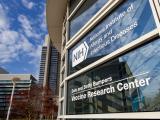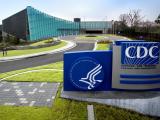May 18, 2005 (CIDRAP News) – The H5N1 avian influenza virus is evolving and poses "a continuing and potentially growing pandemic threat," say experts who were convened recently by the World Health Organization (WHO) to study the pathogen.
Changing patterns of cases, particularly in northern Vietnam, may indicate the virus is becoming more infectious for humans, the WHO said in a report on an international meeting of experts held May 6 and 7 in Manila. In addition, genetic analysis indicates that H5N1 viruses are becoming more antigenically diverse.
The report cites several differences between epidemiologic features of human cases this year in northern Vietnam and those in southern Vietnam this year and overall last year:
- Northern Vietnam has had eight case clusters this year, versus only two in the south.
- Case clusters in northern Vietnam this year have lasted longer than did clusters last year.
- The average age of infected people in northern Vietnam rose from 17 to about 31 years between 2004 and 2005, but it stayed about the same in southern Vietnam (15 to 18 years).
- The case-fatality rate has dropped to 34% this year in the north but is 83% in the south.
In addition, the report says the recent discovery of three asymptomatic cases in Vietnam suggests that milder infections are occurring. A few asymptomatic cases also were found in Japan and Thailand in the past year, and others were discovered in Hong Kong after the H5N1 outbreak in 1997.
The report says the longer duration of recent clusters may signal a growing number of ways in which people contract the virus, including exposure to sick birds, environmental infection, lengthy exposure to asymptomatic birds that are shedding virus, and person-to-person transmission.
The avian virus had already vaulted to the top of the pandemic threat list because it had developed the ability to sicken and kill humans. The virus's inability to cause efficient, ongoing human-to-human transmission is the last barrier to a pandemic. Now experts appear worried that the barrier is crumbling.
"Investigators were not able to prove that human-to-human transmission had occurred. However, they expressed concerns, which were shared by local clinicians, that the pattern of disease appeared to have changed in a manner consistent with this possibility," the assessment states.
At the same time, it says that in places where the disease in poultry has been controlled or eliminated, human cases have stopped. And thus far, the first case in most of the human clusters in Vietnam followed the person's exposure to infected poultry.
For now, "Prevention of H5N1 avian influenza in humans is best achieved by controlling infection in poultry," the document states. "As already recommended by FAO and OIE [the United Nations Food and Agriculture Organization and the World Organization for Animal Health], control strategies for this disease should consider vaccination of poultry, which has been used successfully before."
A team of WHO expert consultants studied Vietnam's outbreak at that country's request from Apr 15 through 25, the report says. That study showed H5N1 could be changing more in the northern region, which prompted a second expert consultation.
This second meeting was held May 6 and 7 at the WHO regional office in Manila. Representatives from Vietnam, Cambodia, and Thailand presented details about the epidemiologic, clinical, and virologic findings regarding H5N1 in people and poultry. Other data were included from the WHO Global Influenza Network and other countries.
The experts make a number of recommendations, including increasing efforts to improve risk assessment, to boost the ability of affected countries to address outbreaks, and to speed the pace of pandemic planning.
The 14 recommendations include the following:
- WHO should convene its Pandemic Task Force to meet regularly, assess the data, and determine the risk for pandemic flu.
- All nations should move as quickly as possible to complete "practical operational pandemic preparedness plans."
- WHO should explore "all possible mechanisms" to make H5N1 vaccine available to the Asian countries affected before a pandemic. It should bring together technical experts, countries, manufacturers and possible donors to find ways to boost global H5N1 vaccine production.
- Coordination of animal and human surveillance and viral information must be improved from the ground level to the national and international level, and data must be exchanged quickly.
- The WHO should complete a handbook on how to investigate possible H5N1 clusters.
- The WHO should explore building a stockpile of antiviral drugs that could be used to respond to early signs of a potential pandemic.
- Countries needing funding and agencies that may provide funding must coordinate their efforts to avoid redundancy and eliminate gaps
As the experts call for greater international effort to address the escalating threat, they also acknowledge the difficulties of preparing for a possible pandemic:
"Evolution of a pandemic strain of virus may be preceded by numerous small steps, none of which is sufficient to signal clearly that a pandemic is about to start. This poses a difficult public health dilemma. If public health authorities move too soon, then unnecessary and costly actions may be taken. However, if action is delayed until there is unmistakable evidence that the virus has become sufficiently transmissible among people to allow a pandemic to develop, then it most likely will be too late to implement effective . . . responses."




















